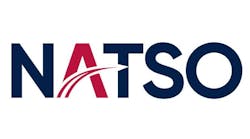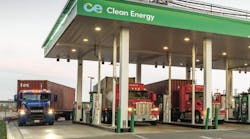It finally came, and in two years we will most likely say it came and went. As you read this column, the Highway Reauthorization Bill, entitled Moving Ahead for Progress in the 21st century, or MAP-21, is being put in place at close to the same funding levels as SAFETEA-LU (the previous highway bill) and the 10 extensions that went with it.
So, yes, Congress did briefly overcome the incessant political gridlock that has existed in the nation’s capital for years to pass a bipartisan bill. Although this is a noteworthy accomplishment, the allocated funds for the highway program under MAP-21 almost certainly will not be enough to fix the crumbling infrastructure. For years, the trucking industry has advocated an increase in the fuel tax to help pave the way (pun intended) for new roads by merely adjusting the fuel tax rate to inflation, which has not occurred since 1993. By the time this bill expires, we will be staring at a funding mechanism for the Highway Trust Fund, used to improve and maintain roads, that is over 20 years old. Using the same system that funded a 20th century highway system for a 21st century one should not be construed as an acceptable means of keeping up with the times and ensuring our road system is at a level that allows our economy to compete.
The problem here is not really the bill itself, but the manner in which it is funded. Cars, trucks, and every other vehicle traveling on the nation’s roads that rely on fuel to traverse the roadways pay a fuel tax that goes into the Highway Trust Fund, which, as currently constructed, is destined to bring in less revenue than it did a decade ago. This is not because the tax rate is decreasing or the cost of fuel is falling, but rather because manufacturers, as instructed by federal standards for fuel efficiency, are building vehicles that are much more fuel-efficient or even non-reliant on fuel at all. Vehicles are not traveling fewer miles; in fact, they are traveling even more than before. Roads are being used more, and less revenue is being brought in through fuel taxes to repair and maintain those roads. The system is being broken down by increasing standards for fuel efficiency and electric cars, both factors that are proving to be an enormous detriment to the fuel tax system that was created decades ago.
Now that MAP-21 has passed, it is time to begin looking down the road at the next reauthorization. A real long-term highway bill for the next generation should include an increase in the fuel tax to offset the efficiencies of the next generation of vehicles. While whispers of a vehicle miles traveled (VMT) tax grow and states have begun initiatives to study how a VMT tax system would work, authorities must realize that the most basic form of raising funds is the fuel tax.
The VMT tax system certainly appears to have its benefits as it truly reflects a traveler’s highway use and is a legitimate user-pay system. However, without understanding the full ramifications of a VMT tax system, particularly on the trucking industry, the VMT method falls well short due to the speculated tremendous amount of administrative costs that accompany the program. Unless federal or state pilot programs and studies are able to conclusively determine otherwise, the current system, which is based on fuel tax receipts adjusted to current rates of inflation, remains a more efficient and faster approach that would go a long way in aiding the problems that exist with today’s infrastructure and in ensuring tomorrow’s.


